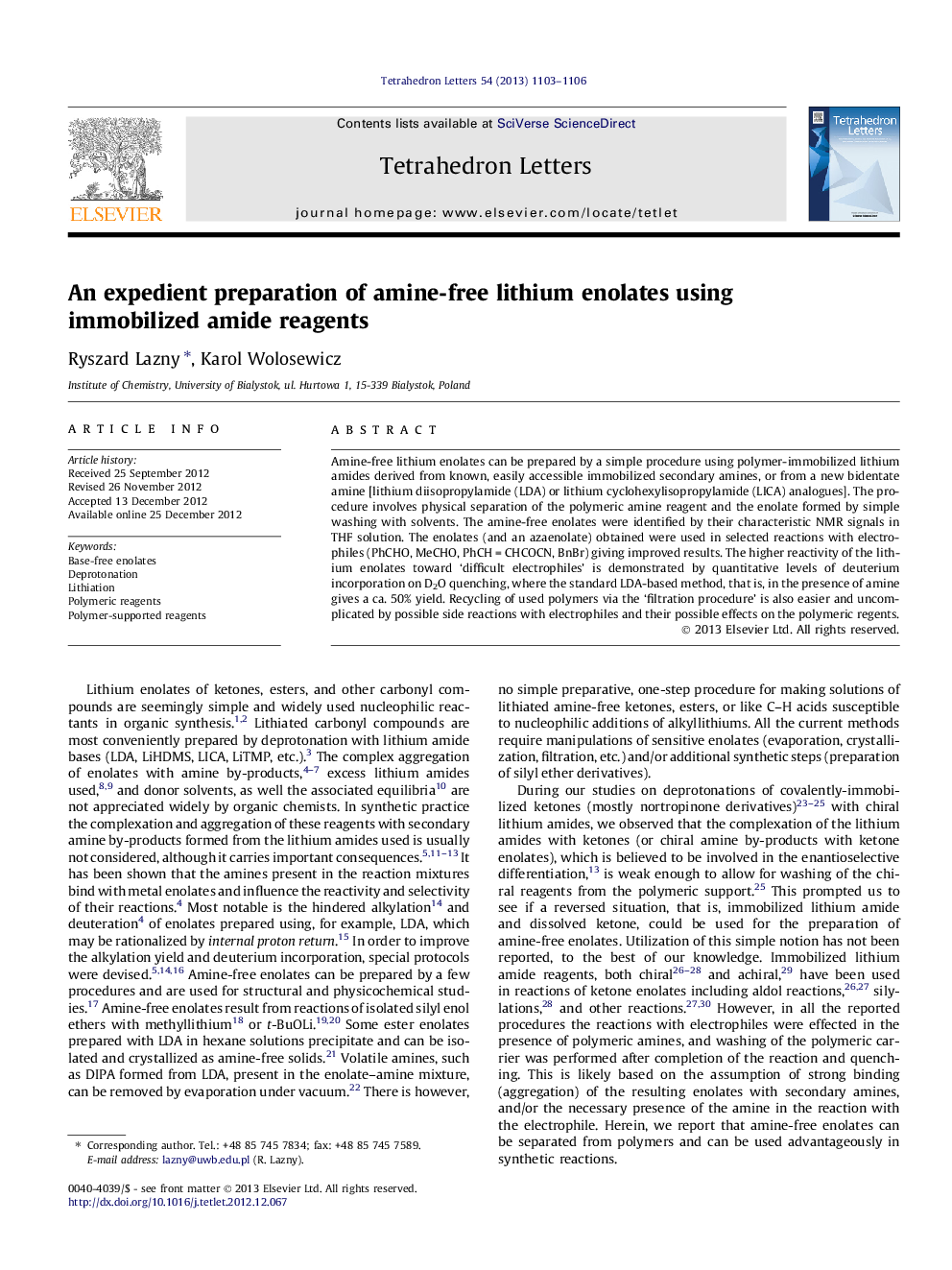| Article ID | Journal | Published Year | Pages | File Type |
|---|---|---|---|---|
| 5266238 | Tetrahedron Letters | 2013 | 4 Pages |
Abstract
Amine-free lithium enolates can be prepared by a simple procedure using polymer-immobilized lithium amides derived from known, easily accessible immobilized secondary amines, or from a new bidentate amine [lithium diisopropylamide (LDA) or lithium cyclohexylisopropylamide (LICA) analogues]. The procedure involves physical separation of the polymeric amine reagent and the enolate formed by simple washing with solvents. The amine-free enolates were identified by their characteristic NMR signals in THF solution. The enolates (and an azaenolate) obtained were used in selected reactions with electrophiles (PhCHO, MeCHO, PhCHÂ =Â CHCOCN, BnBr) giving improved results. The higher reactivity of the lithium enolates toward 'difficult electrophiles' is demonstrated by quantitative levels of deuterium incorporation on D2O quenching, where the standard LDA-based method, that is, in the presence of amine gives a ca. 50% yield. Recycling of used polymers via the 'filtration procedure' is also easier and uncomplicated by possible side reactions with electrophiles and their possible effects on the polymeric regents.
Related Topics
Physical Sciences and Engineering
Chemistry
Organic Chemistry
Authors
Ryszard Lazny, Karol Wolosewicz,
